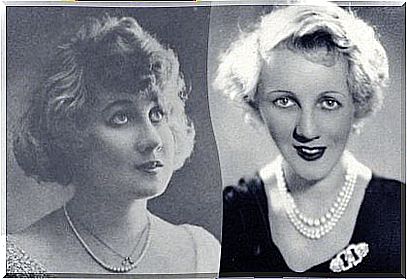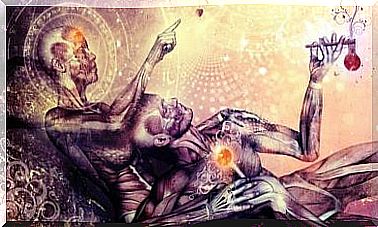The Aimée Case Or Self-punishment Paranoia

The Aimée case is one of the most famous in the history of psychiatry and psychoanalysis. And it is for two main reasons. The first, that this case was the foundation of Jacques Lacan’s graduate thesis. The second, which represented a huge turn in what was known until then about “paranoid psychosis.”
Jacques Lacan is perhaps the most prominent representative of psychoanalysis, after Sigmund Freud. His postulates have represented a definitive advance for classical psychoanalysis. The Aimée case was the one that began to catapult him as a lucid new thinker in this field.
The Aimée case has also sparked controversy due to the particular conditions in which the treatment was given and presented to the scientific community. Also because of the consequences that it eventually had on the descendants of this famous patient. We speak, without a doubt, a fascinating chapter in the history of the sciences of mental health.

Marguerite Pantaine, La Aimée de Lacan
Marguerite Pantaine went down in history as Aimée. This was the name of one of the characters in a novel he wrote. It was also the name with which Lacan baptized it within his graduate thesis. She was a woman born into a Catholic peasant family in France, who apparently began to present persecutory ideas at the age of 28.
It happened during her first pregnancy . He thought they wanted to hurt him and that is why he developed violent behavior. Her first daughter was stillborn and she became convinced that a friend of hers had been the culprit. Then she got better, but during her second pregnancy the persecutory ideas returned. That is why she did not allow anyone else to take care of her son, Didier, during his first five months of life.
Her persecutory ideas grow and it is then that she is admitted for the first time to a psychiatric hospital. Once she is discharged, she goes to live alone in Paris. He made up his mind that an actress named Huguette Duflos was the one who wanted to hurt her son. He wrote letters to the Prince of Wales commenting on his suspicions. Finally, in April 1931, Margueritte attacks the actress with a razor. This leads her to jail.
The interesting development of the Aimée case
Upon checking her mental state, Margueritte is sent to the Santa Ana mental hospital, where she is treated by Jacques Lacan for 1 year and a half. Since she was imprisoned, her symptoms disappeared. This was what led Lacan to conclude that his was a “paranoia of self-punishment. ” In other words, being punished was what restored her to sanity. He sustained an unconscious guilt and as it was expiated by means of a prison sentence, delirium was no longer necessary.
Without going into the psychoanalytic details of the Aimée case, the truth is that it had a very particular development and outcome. Jacques Lacan was fascinated with her and her situation. In fact, the name Aimée means “beloved” and it is curious that Lacan called her that. Not that he had a loving relationship with her, but he did find in her condition many keys to develop his theory of psychosis.
Margueritte wrote novels that no one published for her. As part of his treatment, he gave them to Lacan, who never returned them. Paradoxically, he became famous for history, thanks to the writings of Lacan. From before starting her treatment, Margueritte maintained that there were people interested in stealing her words.
He accused the writer Pierre Binot of having stolen his ideas to make his texts. Finally something like this was what happened during his experience with Lacan.

An unexpected outcome
According to Jacques Lacan, Margueritte was cured simply by being severely punished for her attempted murder. It is known that some of his delusions reappeared later, but also that they did not complicate his life. Nor did they take her to a new hospitalization, with which the basic Lacanian thesis has been considered correct.
What is surprising about this whole story is that Margueritte’s son, Didier, decided to become a psychoanalyst. In his autobiography, he points out that a deep loneliness and his mother’s problems had led him down this path. Without knowing it, Didier arrived at Lacan’s office to psychoanalyze himself. She was completely unaware that the Aimée case concerned her mother.

At one point he suspected that it was. He investigated it in detail and then complained to Lacan for not having told him. He pointed out that he had not realized it until well into the process. That is why he was silent.
Didier tried to recover his mother’s novels, but it was impossible. He became a writer himself. A beautiful outcome. The son of a delusional mother became a psychoanalyst. He could never know what his mother had written, but ended up making the pen his profession.









